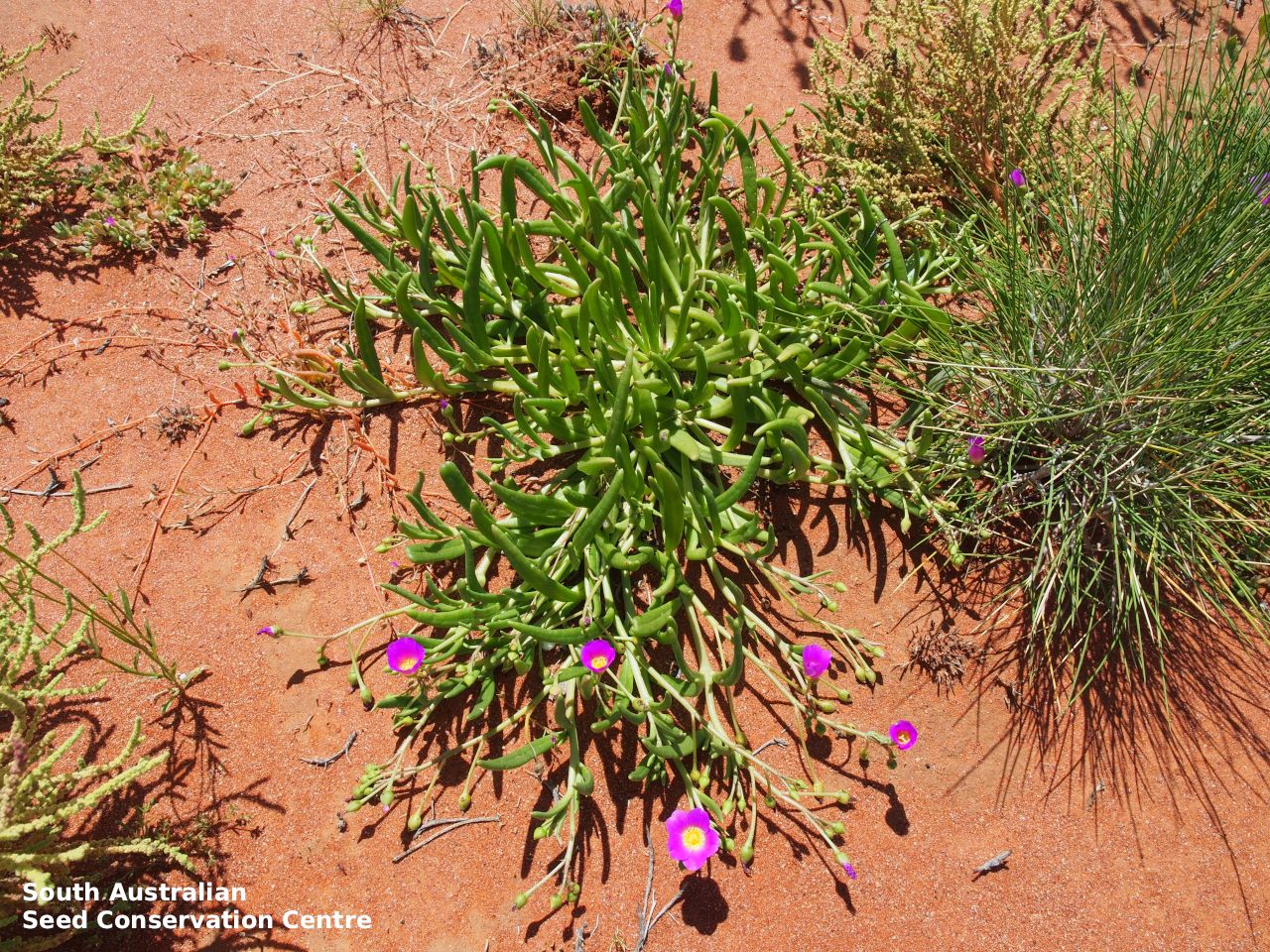


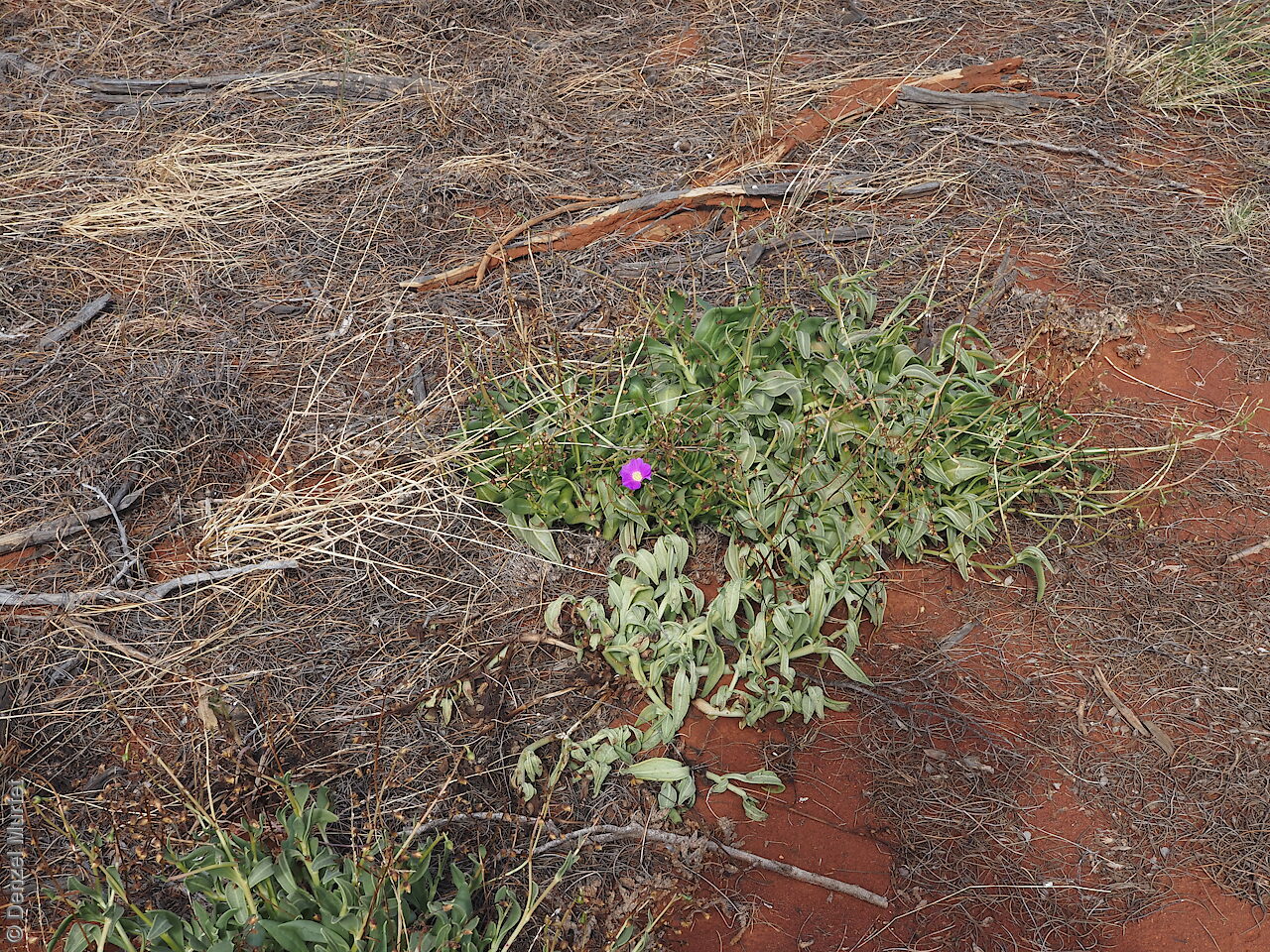

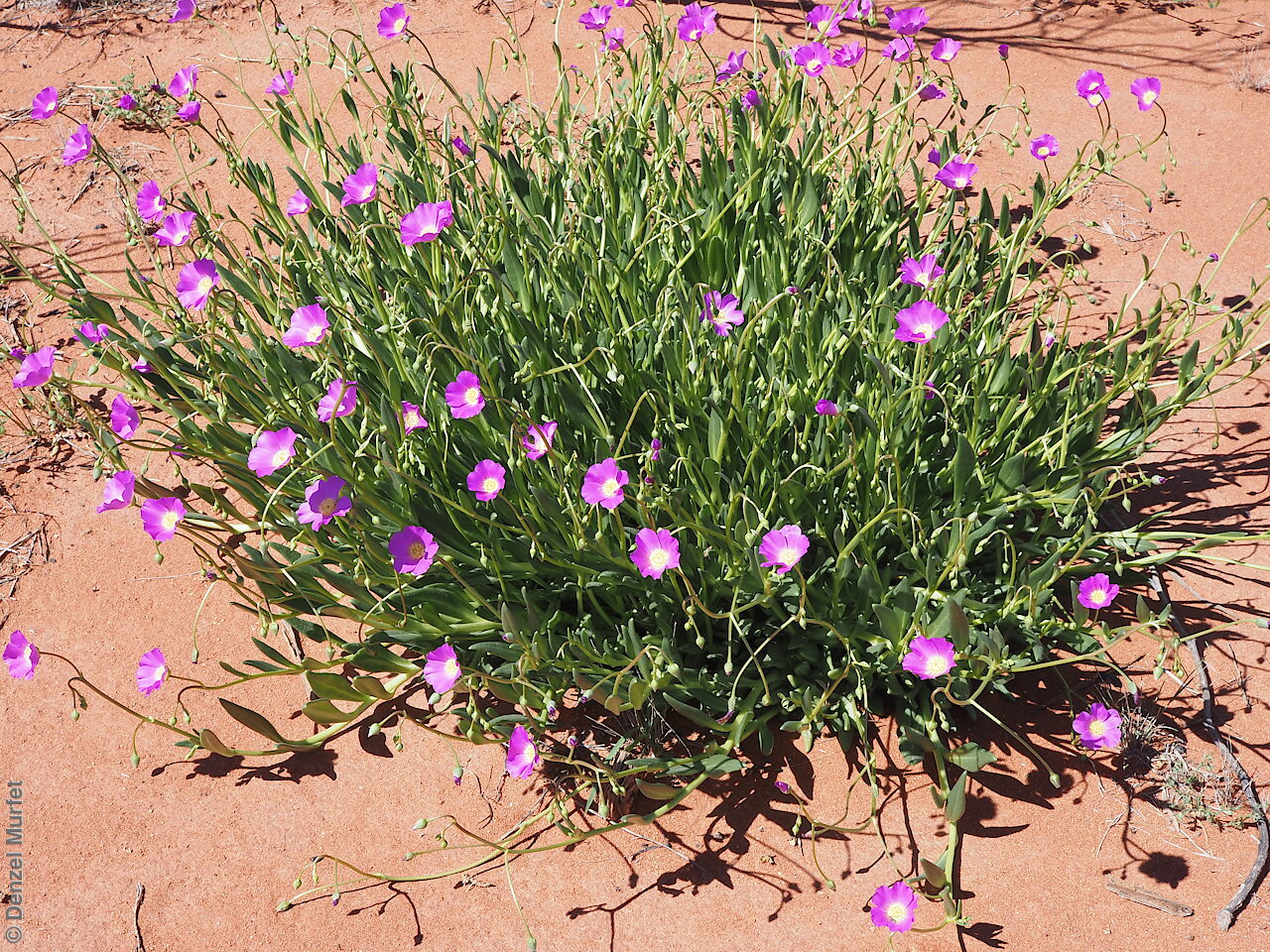

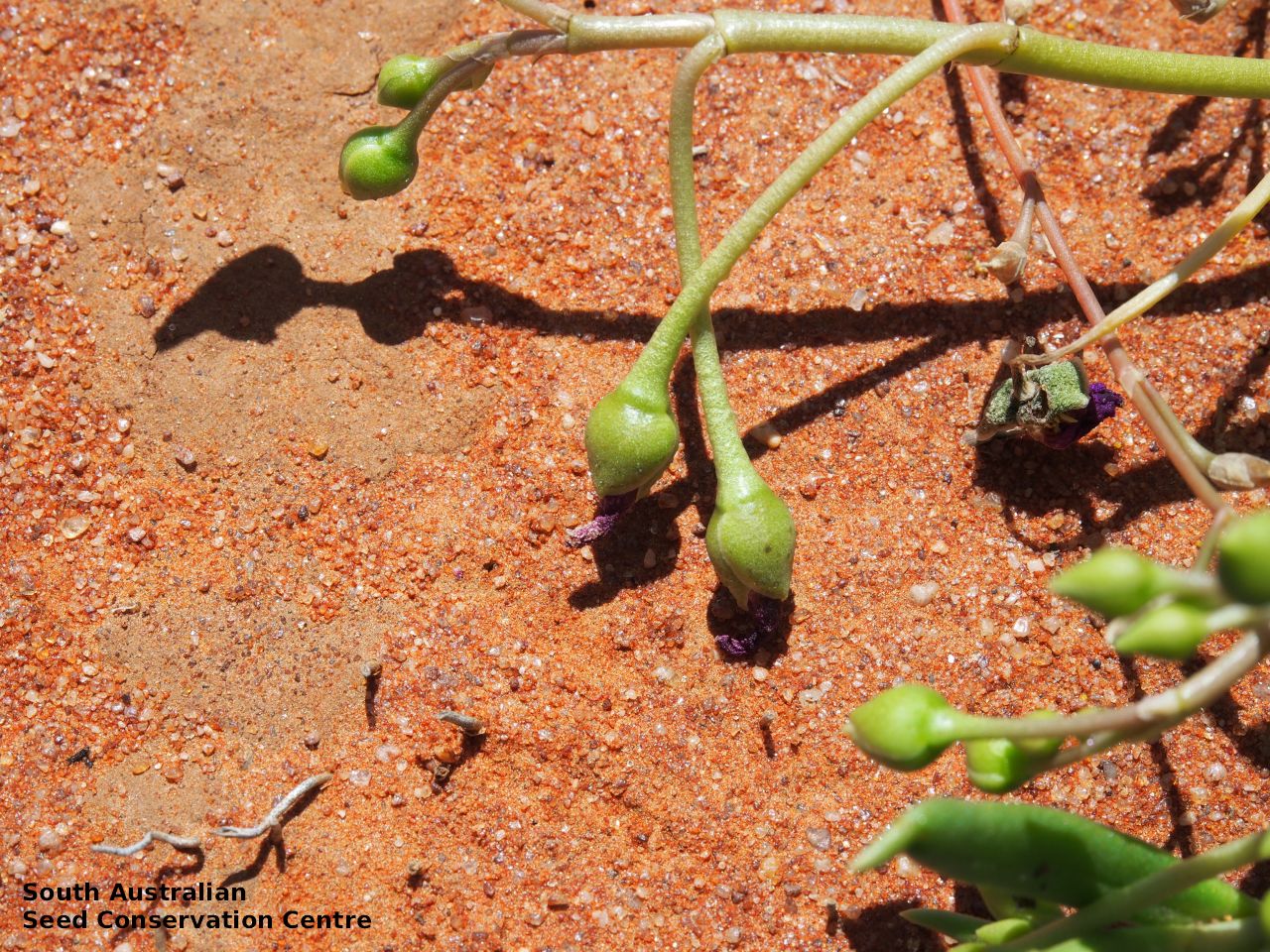

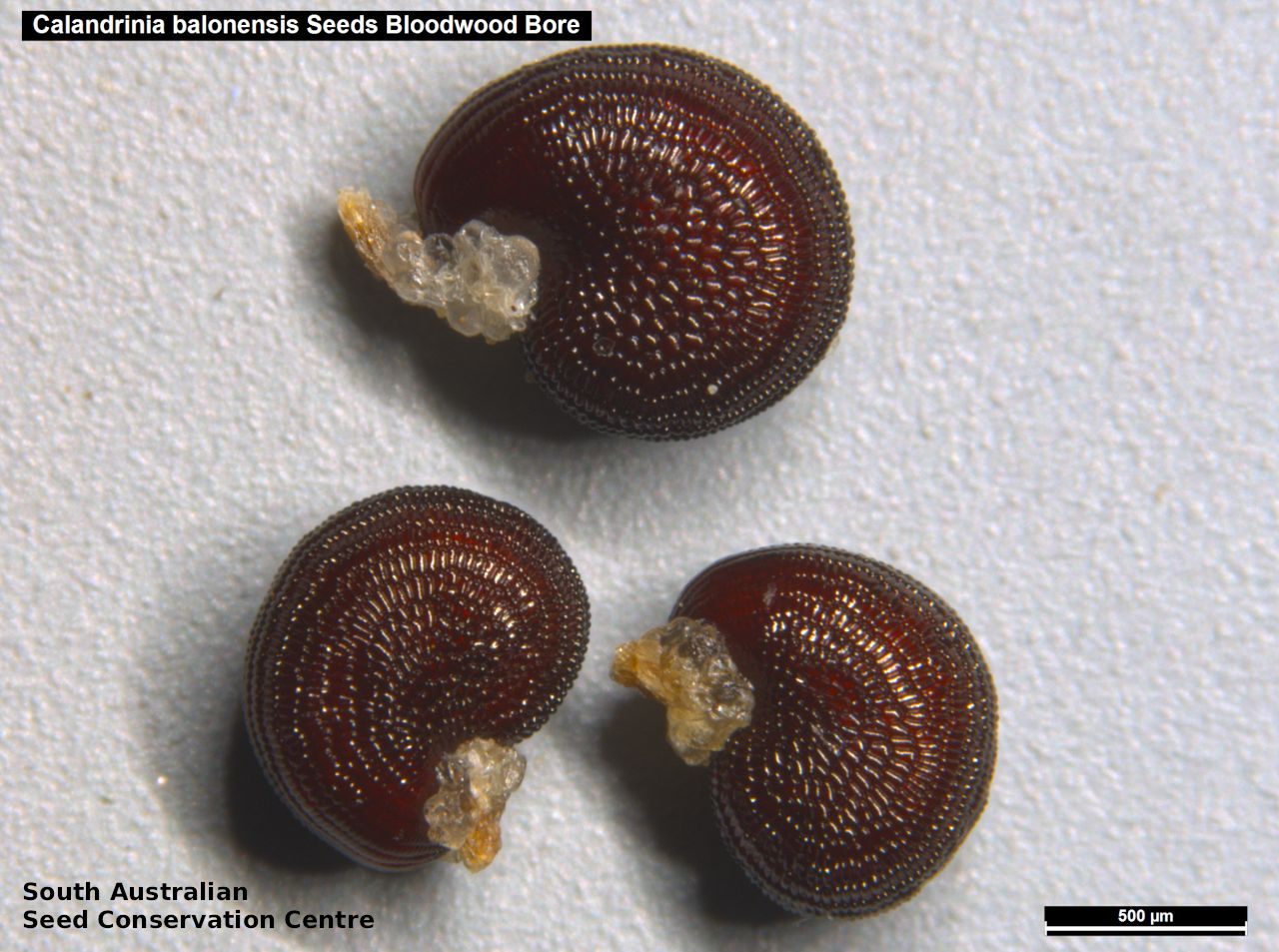

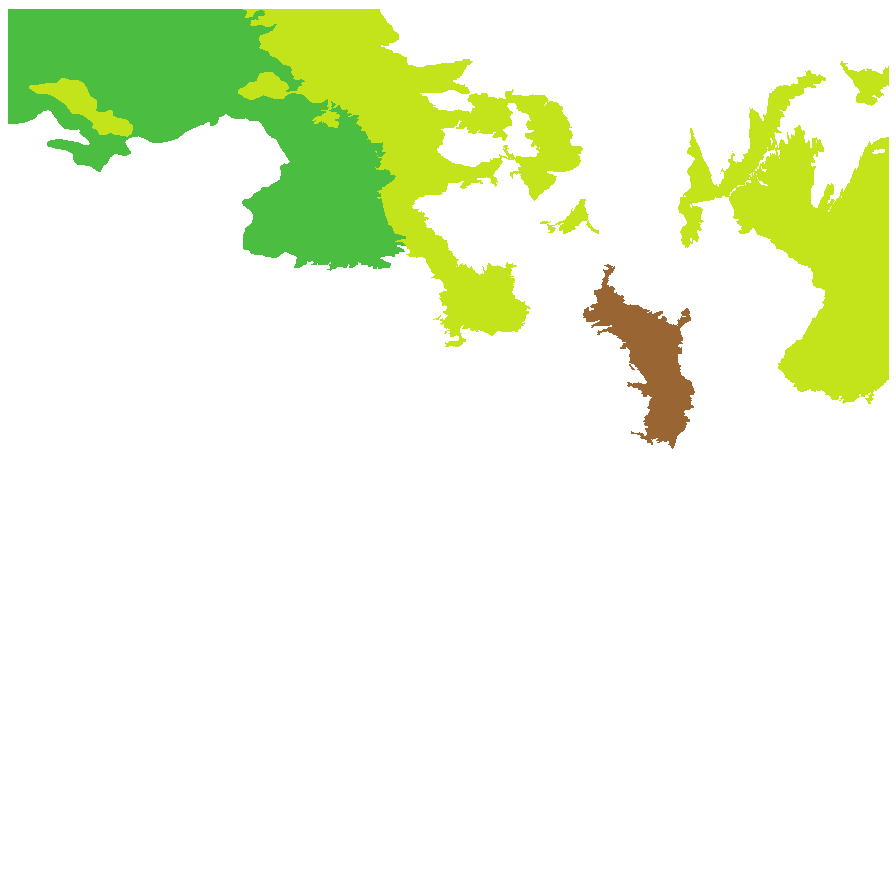
Botanical art
Prior names
Parakeelya balonensis
Common names
Broad-leaf Parakeelya
Parkilypa
Etymology
Calandrinia named after Jean-Louis Calandrini (1703-1758), a Swiss scientist, professor of mathematics and philosophy. Balonensis named after the Balonne River in Queensland, Australia where the type specimen was collected.
Distribution and status
Found in the northern part of South Australia growing in arid areas on sandy soils. Also found in all mainland States except in Victoria. Native. Common in South Australia. Common in the other States.
Herbarium regions: North Western, Lake Eyre
AVH map: SA distribution map (external link)
Plant description
A prostrate to erect annual herb with succulent basal rosette of leaves that from a distance may not appear succulent. Leaves basal and on the flowering stems, alternate, linear to lanceolate to 10 cm long and 1 wide. Inflorescence numerous erect single flowers on a stalk to 30 cm high, bi-coloured petals, mainly pink-purple becoming bright yellow at the base. Flowering between May and November. Fruits are pale brown ovoid capsule to 9 mm long with 3-valves, the valves recurved at the apex. Seeds are reddish-brown reniform-ovoid seed to 1.2 mm long and 1 mm wide, with a round tuberculate surface. Seed embryo type is peripheral.
Seed collection and propagation
Collect seeds between July and January. Collect mature capsules, those that are turning a pale brown colour and contain dark seeds. Place the capsules in a tray and leave to dry for one to two weeks. Then rub the capsules gently by hand to dislodge the seeds. Use a sieve to separate the unwanted material. Store the seeds with a desiccant such as dried silica beads or dry rice, in an air tight container in a cool and dry place.